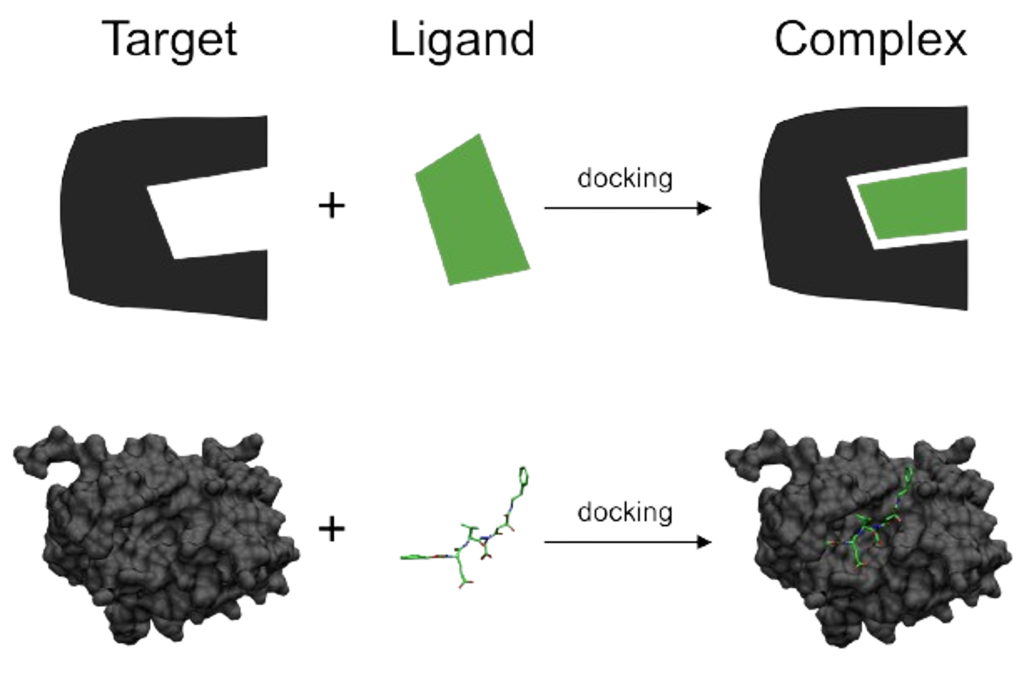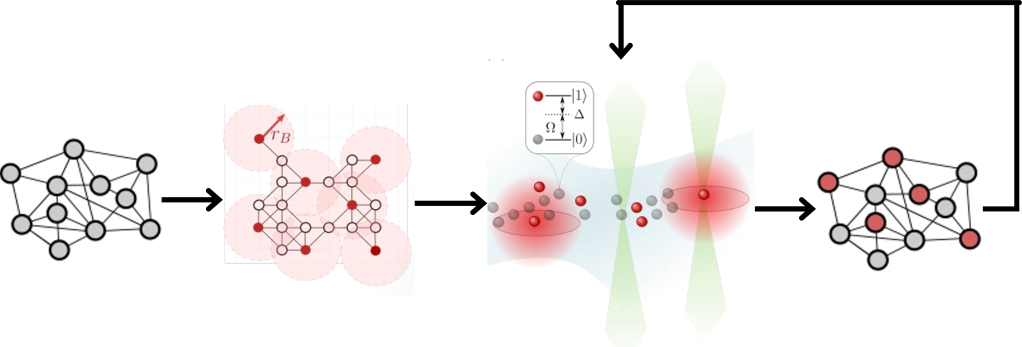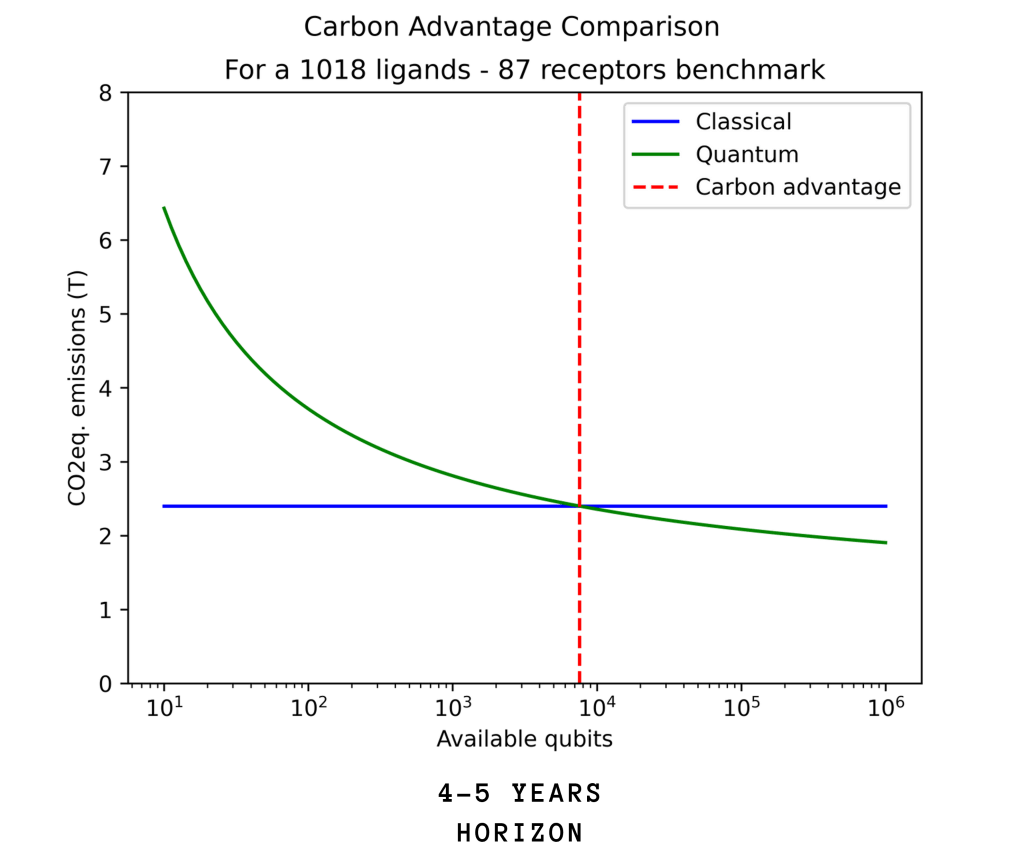In the early 1640s, Blaise Pascal, still a teenager, invented the first mechanical calculator. Popularly known as the Pascaline, this artifact kicked off a technological revolution of machines as helpers in solving math problems. Since PASQAL is a French quantum computing company, building the next generation of supercomputers, we bear his name in his honor.
Blaise Pascal was a renowned mathematician, engineer, and philanthropic entrepreneur, but above all, he was a philosopher concerned about the social, ethical, and scientific problems of his epoch. To celebrate his 400th birth anniversary and honor his legacy, PASQAL, in collaboration with Blaise Pascal Advisors, has organized a quantum computing hackathon—The Blaise Pascal [Re]generative Quantum Challenge—going beyond a mere performance competition, aiming to underscore the benefits of quantum computing for sustainable development.
Seeking to serve in an accountable manner the UN Sustainable Development Goals (SDGs), PASQAL proposed six sustainability challenges, related to ten SDGs, that have the best chance to be addressed using neutral atom quantum technology, effectively reducing the carbon footprint in comparison with classical methods. They are shown in Figure 1.

The hackathon candidates were asked to propose use cases that directly or indirectly address one or several of the proposed challenges and solutions implementable on the current or next PASQAL quantum technology, showing how their hybrid quantum/classical models can lower the carbon footprint compared to pure classical techniques.
Opening registration on August 16, the hackathon attracted more than 770 candidates organized in teams that presented 75 proposals from over 20 countries. From October 5, for six weeks, the teams worked alongside business and technical mentors and consultants from PASQAL and Capgemini, offering guidance and strategies along their journey.
Addressing SDG challenges and lowering the energy footprint with quantum computers
Why quantum computing? Quantum computing holds the promise to address complex problems that are inaccessible to traditional devices. These problems are said to be inaccessible or intractable because their computation time increases exponentially with their size. Typical examples are optimization problems, such as food chain supply optimization (FSO), which encompasses all activities, organizations, actors, resources, and services involved in producing consumer agri-food goods. Other typical examples of intractable problems are chemistry simulations at the molecular level, which are particularly crucial in healthcare, such as drug design or toxicity prediction. Hybrid methods involving quantum computers and classical methods are expected to help accelerate environmental innovation and healthcare systems, identifying integrated solutions, such as smart grids, sustainable agricultural practices, and biomolecular dynamics for vaccines and drug discovery.
In PASQAL’s current quantum architecture, arbitrary arrays of neutral atoms are individually manipulated using highly focused laser beams, so-called optical tweezers. The quantum information is encoded by controlling the atoms’ electronic energy states, usually a ground state and a very high energy state called a Rydberg state. Various components, including a classical computer, are needed to set up and complete the calculations on a neutral atom processing unit. Each of them adds up to the energy consumption. PASQAL’s current commercial device, Fresnel, functions at room temperature; therefore, no power consumption due to refrigeration components needs to be considered. The total Fresnel energy consumption, at maximum capacity, amounts to 2- 3 kW.
Finalists and winners’ selection methods
The First stage involved filtering on the use cases according to a sustainability assessment where each project should contribute at least to one of the six domains in Figure 1. Exclusion criterion: the jury argued against potential adverse effects of any use case as listed of UNESCO recommendation on the ethics of AI. Fifty projects were chosen.
The second stage was related to the feasibility/credibility assessment of their quantum algorithms. The teams were asked to argue on the implementability of the proposed solution on a neutral atoms 100+ qubits, 500+ qubits machines and on the scalability to 1000 + qubits. Twenty projects advanced.
The third stage was related to both the quality of the implemented solution and the quantum energy advantage, including the life cycle of the computers. They were asked to deliver the definitive version of the algorithm and the code, reporting with detailed data, simulations, and interpretations of the energy consumption of the chosen methods.
The score was built upon the following criteria:
- Feasibility / credibility of the proposed quantum algorithm.
- On the potential quantum energy advantage, a ratio to a classical HPC (High Performance Computers) equivalent. They were asked to clearly expose all the required computational resources (GPU or/and CPU) for the classical runtimes and the quantum resources including details, such as the number of qubits. They were also asked to argue on the full computing life-cycle energy ratio quantum to classical and the energy costs of scalability (adding more qubits).
- On the excellence / innovation of the code, whether using a novel algorithm or an innovative application of an existing algorithm.
Ten finalist teams advanced.
The final demonstration and winners
The ten finalists were asked to deliver a live demonstration of their results presented to a external jury. The jury panel included:
- Florent Menegaux, CEO of Michelin
- Frederic Magniez, Director of Research at CNRS
- Etienne de Rocquigny, Founder Blaise Pascal Advisors
- Kristel Michielsen, Supercomputing Centre Jülich and Founder of EMBD
- Georges-Olivier Reymond, CEO of PASQAL
The evaluation was based on: sustainability value of the use case, technical quality of the implementation on present and future quantum technologies, excellence/originality of the approach, and carbon footprint advantage resulting from energy savings as compared to existing classical HPC solutions. The jury selected three winning projects out of the ten finalists.
The Hackathon winning projects: use cases, sustainability challenges addressed, solutions, and lessons
3rd prize: Molecular docking with neutral atoms. Drug discovery, in SDG 3. Team members: Victor Onofre, Noe Bosc-Haddad, and Mathieu Garrigues
Paclitaxel is a molecule widely used in chemotherapy to combat breast, lung, and pancreatic cancers. However, since it is a natural substance extracted from the bark of the yew tree, its usage poses a risk to yew populations and their ecosystems. Large-scale cultivation of species selected for their high paclitaxel concentrations partially solved the problem. Still, production remains low enough for the medication to maintain excessive costs. Furthermore, monocultivation of these species (particularly in China) negatively impacts biodiversity, making global paclitaxel production vulnerable to natural risks, such as droughts, fires, and diseases. The synthesis of this molecule is highly complex (between 25 and 40 steps), expensive, and produces numerous toxic byproducts. This situation prevails around many other medications and treatments today.
To alleviate these problems, several laboratories are trying to find synthetic alternatives. Unfortunately, 90 % of clinical drug development fails to gain approval. Therefore, the pharmaceutical industry needs to improve the drug discovery process. Computational strategies can help accelerate drug design. However, identifying new potential molecules for medical treatments is computationally intense and often an infeasible task for classical methods. New strategies are emerging to speed up the process, such as structure-based virtual screening, which relies on how a candidate drug molecule (called a ligand) docks into the targeted protein within our bodies, the so-called molecular docking method. With this approach, researchers can predict the activity of the candidate molecules at the binding site of the proteins, helping select those with desirable behavior. A molecular docking problem can be mapped into a graph problem; however, although gaining popularity due to their versatility, graph-based tasks are still very costly for classical computers. Molecular science is a key application of quantum computing, which promises speedups over traditional classical architectures for certain problems.

“I read a paper about molecular docking, and this paper explained how to map the problem into graphs. I also knew about PASQAL and how its technology can implement graphs, so I thought this problem could be solved using PASQAL devices,” explained Victor Onofre, quantum software engineer. “We knew that PASQAL is one of France’s more mature quantum technologies, so it was important for us to participate in this hackathon proposing this crucial problem in healthcare.”
Graph methods are the best fit for a neutral atom quantum computer, such as PASQAL’s, due to their relatively native implementability. This is because the quantum system associated with the arrays of cold neutral atoms can be naturally interpreted as a graph-like structure from a mathematical point of view.

The team estimated the implementation of their algorithm on the PASQAL quantum hardware and created a roadmap for future generations of hardware to solve the molecular docking problem. Together with a technical mentor, they emulated a preliminary version of the algorithm and estimated the implementation on the 100+ qubits PASQAL current device, showing how the solution will be significantly enhanced over the classical method in the 1000+ qubit generation. Finally, they estimated that the carbon footprint advantage would occur using a future generation with more than 10 thousand qubits (Figure 4).

“We are a very inefficient species. We need help from machines to help us understand how to preserve the resources we need, and quantum computers are good candidates to do that,” commented Mathieu Garrigues, machine learning and quantum computing engineer.
2nd prize: NeutroGen: Unlocking data-driven applications. Smart grids and affordable/clean energy, in SDG 11 and 13. Team members: Maria Demidik, Manuel Rudolph, Cenk Tüysüz, and Giorgio Facelli
Finding layouts of wind farms that maximize efficiency is a crucial problem for renewable energy industries. For example, how to place windmills on a field, maximizing their exposure to the largest wind velocities—usually fields characterized by variable wind velocities—but preventing the windmills from obstructing one another when positioning closely? This problem falls into combinatorial optimization, which quickly becomes very complex and extremely costly to classical computers. Moreover, such infrastructures should be designed to operate for decades since the infrastructure is hardly reversible. Therefore, efficient planning of the smart grids is crucial to avoid excessive resources and energy consumption, securing a more sustainable energy system.
Neutral atom quantum computing provides a promising framework for addressing many data-driven problems that can be adapted to combinatorial optimization. Incoming data can be translated to neutral atom positions via graphs techniques, by mapping correlations in the data to the atom’s positions in the register.
“We were participating in a quantum computing summer school at Los Alamos National Laboratory in the US when this hackathon was mentioned to us, and I thought, let’s do it, let’s participate!” says Manuel Rudolph, PhD student at EPFL in Lausanne, Switzerland. As a quantum machine learning researcher, the proposed topic came to my mind when I thought, how can we use quantum computing based on neutral atoms to solve problems that need a lot of data?”
A limitation of the current neutral atoms’ technology is the difficulty of representing non-planar graphs (> 2D) with their atomic arrays, which is important for solving most smart-grid problems. The NeutroGen team proposed an algorithm that converts the original not-planar graph problem into smart 2D or 3D atom arrays, yielding high-quality results. An important advantage of using PASQAL-type quantum architecture is that when the qubits are in the Rydberg state, the van der Waals interactions forbid two atoms to be in the Rydberg state simultaneously if they are too close to each other, a phenomenon called Rydberg blockade. This natural phenomenon helps suppress unfavorable solutions to the optimization task.

“Most of us in the team were aware of PASQAL, but not all of us were aware of its architecture, so, one of the challenges for us was to understand all neutral atoms functionalities and capabilities and use it correctly,” says Maria Demidik, PhD student at DESY, Germany.
For this team quantum solution, minimal to no training data is needed in the workflow, promising efficient solutions to intricated challenges, not only for windmills farms but for many other smart-grids applications.
The team estimated the potential time and energy savings compared to HPC classical methods. They found that for the windmills farm optimization task, their approach would allow cutting down classical cost significantly. They compared exhaust searches and Monte Carlo simulations to their algorithms implemented on neutral atom quantum processing units. The results are in the figure below where the quantum advantage and the possible associated energy advantage reach the cross-over points. Benchmarking with exhaustive search is only feasible for way under 100 qubits, but for the very popular Monte Carlo method, it is slightly over the 300 qubits mark (Figure 6).

1st prize: Neutral Atom Renewable Energy Forecasting. In affordable and clean energy, climate, and biodiversity – SDG 13. Team members Naomi Mona Chmielewski, Léo Monbroussou, and Ulysse Rémond
Energy production from clean sources, such as windmill parks or solar panels, depends on highly chaotic, hard-to-model weather and climate conditions. An unreliable forecast can have both environmental and economic impacts. If production is underestimated, energy providers must return to other sources, such as fossil fuels or other less sustainable alternatives, which can quickly lead to much higher CO2 emissions. If production is overestimated, energy providers will be penalized financially.
Models that can predict the behavior of such complex systems can be hard to train and require a significant amount of energy and data. Many such models require access to high performance computers. This can create inequality between large energy providers with access to expensive computational resources and smaller ones trying to incorporate more renewable energy sources.
“Models tend to consume a lot of energy, defeating the purpose of optimizing energy. At EDF [a leading French energy company], we use it for renewable energy production, but that is actually the case for many other problems around SDGs items,” said Ulysse Rémond, Ph.D. candidate at EDF.
An interesting machine learning paradigm to model complex systems is known as reservoir computing. A reservoir is a physical system that exhibits complex behavior, and its dynamics are used to replicate the behavior of the original system in time. A reservoir could be created out of classical analog circuits, for instance, to model a system with delayed feedback. Quantum systems have been spotted as natural choices for reservoirs with very low data training costs. Being neutral atom quantum processing units, such as PASQAL’s machines, particularly well-suited for analog frameworks, the winning team developed two novel algorithms tailored to be implemented on a PASQAL current device.
“I was aware of several technologies, but PASQAL is definitely one of those advanced technologies, very well known within the quantum community,” said Naomi Mona Chmielewski, Ph.D. Candidate at EDF, France. “Within this hackathon, we have seen a lot of combinatorial problems that can be applied to smart cities, for example, where our use case can also be applicable.”
They tested one of their programs on our emulator using 14 qubits, obtaining results that significantly outperform the traditional neural networks classical reservoir (Figures 7 and 8).


Regarding the energy consumption benchmark, the winning team explored the quantum and energy advantages with the data size of the problem for PASQAL current commercial device Fresnel and the next generation device Rubi benchmark with NVIDIA GPUs and Joliot-Cirie HPC center. The results are shown in the figure below (Figure 9.).
“We will see within a couple of years how quantum computing can help with the SDG challenges,” Naomi remarked. “This use case is part of the research I have been doing during my PhD project. I would love to implement it in a PASQAL device and potentially publish the results on a peer review journal and continue working on establishing a mathematical framework around it to make it easier to construct good reservoirs.”

“The next step is to test the successful use cases and algorithms in this hackathon on the quantum computer, using real data, and see what kind of complexity might appear,” commented Ulysse Rémond, Ph.D. candidate at EDF. “The fact that we can have this opportunity with PASQAL devices right now is not very common,”
Final messages from members of the three winning teams
Mathieu Garrigues from the Molecular Docking team: “Quantum computing is fun! It is a subject that is incredibly stimulating because, while it is quantum physics, you need to know a lot of computer science, so it is a completely new challenge whatever your background; and as for us, we truly believe that this is technology of the future. So, if you start now working on it, you will be working on something that will change humanity.”
Maria Demidik from the NeutroGen team: “It is very fundamental to any woman who wants to join the field or if they want to study physics or math or programing to go for it! At the moment, in academia and the industry, there has been a lot of progress in the gender equality agenda, we are on the right track, and I think that more people understand that is not your nationality or gender that defines you as specialist or as a scientist, it counts more your knowledge, experience and skill.”
Manuel Rudolph from the NeutroGen team. “I love doing research related to quantum computing, I love the dynamics, the enthusiasm and how everyone is willing to collaborate with one another, those are the upsides of being in this modern up-and-coming field.”
Naomi Mona Chmielewski from the Renewable Energy Forecasting team: “Quantum computing is a really dynamic and young community. I find it very inclusive, very welcoming, and it is very interdisciplinary field, so even if you are not a physicist, but a mathematician, or a computer scientist you can come into it with a different knowledge and bring new perspectives.”
The seven finalists’ projects in no particular order
- Quantum Powered Planner for EV (electric vehicles) Charging Networks. Finding the most efficient locations for electric vehicles charging stations. In sustainable transport, industry, and circular economy (SDG 9); environment, climate, and biodiversity (SDG 12). By Jaka Vadeb and Alejandro Montanez.
- Crystal Structure Prediction with Rydberg Atom Arrays. Predicting the stable crystal structures of materials based on their chemical composition. The complexity escalates when applied to drugs, resulting in increased drug costs, and making them less accessible to the global population. In good health and well-being (SDG 3). By Artem Zhutov, Soroush Khoubyariam, and Bharat Kuchhal.
- Efficient Transport Network Design with Neutral Atom Arrays. Designing efficient and sustainable public transport networks. In sustainable transport, Industry, and circular economy (SDG 9). By Chia Tso Lai, Alfaxad Eyembe, Mudassir Moosa.
- Qurobi: A Quantum pipeline for sector coupling. Heterogeneous energy network, complex system simulation. In smart grids, affordable and clean energy (SDG 7). By Anna Knörr, Petia Arabadjieva, Arijit Upadhyay, and Jonas Kramer.
- Material Characterization for CO2 Capture. Efficient carbon capture and sequestration. Environment, Climate, and biodiversity (SDG 13, 14, and 15). By Hugo Jaunin and Brian Ventura.
- Rail Schedule Optimization with Quantum Computing. Optimal scheduling of existing large train networks with multiple constraints. In sustainable transport, industry, and circular economy (SDG 9). José Jesus.
- Water Leak Detection. Optimal placement of sensors within water distribution to detect leaks in a water distribution network. In smart cities, clean water, and sanitation (SDG 6 and 11). By Quentin Ma, Maëlle Toy-Riont-Le Dosseur, Louis Barcikowsky, and Laurent Querella.
Would you like to learn more about these techniques on a neutral atom quantum computer? Get familiar with quantum computing, our platform, and algorithms with Quantum Discovery.
References
- Appeltant, L., Soriano, M. C., Van Der Sande, G., Danckaert, J., Massar, S., Dambre, J., Schrauwen, B., Mirasso, C. R., & Fischer, I. (2011). Information processing using a single dynamical node as complex system. Nature Communications, 2(1). https://doi.org/10.1038/ncomms1476
- Bravo, R. A., Najafi, K., Gao, X., & Yelin, S. F. (2022). Quantum reservoir computing using arrays of Rydberg atoms. PRX Quantum, 3(3). https://doi.org/10.1103/prxquantum.3.030325
- Chen, J., & Nurdin, H. I. (2019). Learning nonlinear input–output maps with dissipative quantum systems. Quantum Information Processing, 18(7). https://doi.org/10.1007/s11128-019-2311-9
- Fujii, K., & Nakajima, K. (2017). Harnessing Disordered-Ensemble quantum dynamics for machine learning. Physical Review Applied, 8(2). https://doi.org/10.1103/physrevapplied.8.024030
- Halperin, I., Ma, B., Wolfson, H. J., & Nussinov, R. (2002). Principles of docking: An overview of search algorithms and a guide to scoring functions. Proteins: Structure, Function, and Bioinformatics, 47(4), 409–443. https://doi.org/10.1002/prot.10115
- Henriet, L., Beguin, L., Signoles, A., Lahaye, T., Browaeys, A., Reymond, G. O., & Jurczak, C. (2020). Quantum computing with neutral atoms. Quantum, 4, 327.
- Philippe, & Philippe. (2023, March 8). Why 90% of clinical drug development fails and how to improve it? Pharma Excipients. https://www.pharmaexcipients.com/news/90-of-drugs-fail-clinical-trials/
- Thabet, S., Fouilland, R., Djellabi, M., Sokolov, I., Kasture, S., Henry, L-P., and Henriet, L. (2023). Enhancing Graph Neural Networks with Quantum Computed Encodings. Available at: https://arxiv.org/abs/2310.20519


